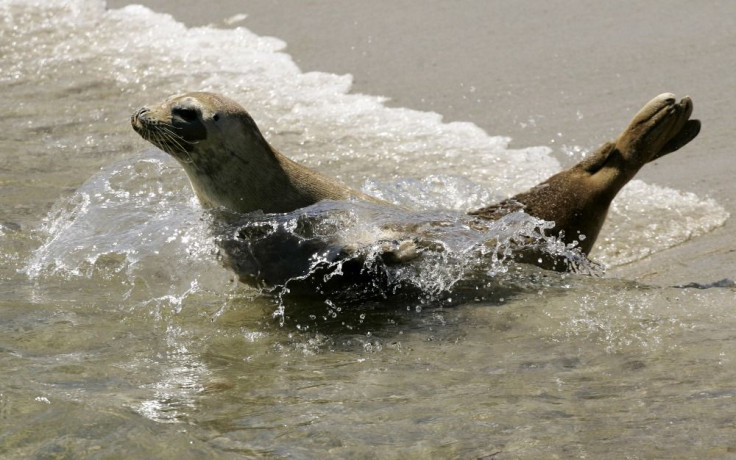Harbour Seals Could Be Experiencing Hearing Damage Due To Wind Turbine Construction In UK Coasts

Harbour seals residing near wind turbine construction sites in U.K. could put seals’ hearing at risk for damage due to high noise levels, a new study has found. Researchers say that although there is information on how wind turbines affect the mammal’s hearing very little is known about the effect of construction noise, which is why a research has been carried out.
The study was carried out by researchers from University of St. Andrews and found that some seals may be at risk for hearing damage due to increasing human activities in the coastal waters. The team of ecologists headed by Gordon Hastie gave focus to seal communities inhabiting areas close to where wind farms are being constructed.
The researchers tracked 24 seals in 2012 using fitted GPS trackers to help them monitor their activities and movements near the construction sites. The researchers were interested to see which of the animals move near to the sites during times when noise levels are at its highest.
The data from the GPS monitoring, together with information from wind turbine developers regarding the time of pile driving, predicted the noise level each animal was exposed to. This information is then compared to the noise levels associated with hearing damage, Science Daily reports.
The results showed that half of monitored seals were exposed to noise, which exceeds thresholds considered to damage hearing. What’s worse is that seals have more sensitive ears compared to humans, as Hastie said. Seals may rely on their hearing for survival because according to Hastie, hearing is necessary for efficient prey hunting.
Science Daily reports that there are 1,184 offshore wind farms around U.K. coast. The construction that began in 2014 only means that more wind turbines will be installed to generate 31 giga-watts of power.
Researchers say that the results of the study are important because the seals are under the protection of the European law. Anything that has an effect to their conservation status must be assessed before any wind farm constructions will be performed.
To report problems or leave feedback on this article, email: wendylemeric@gmail.com.





















